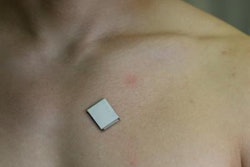
Ultrasound-guided surgery in women with ductal carcinoma in situ (DCIS) is effective and eliminates the need for a guide wire, suggests research presented November 15 at the 13th European Breast Cancer Conference in Barcelona.
In his presentation, Dr. Antonio Esgueva from the Clinica Universidad de Navarra in Madrid talked about the method, called intraoperative ultrasound-guided surgery, and how it decreases excision of healthy breast tissue while increasing negative margin rates over standard wire localization.
"The idea of the study is to get rid of the wire," Esgueva told AuntMinnie.com. "We have found that you don't need to put a wire in in order to localize this nonpalpable area."
Intraoperative ultrasound-guided surgery has shown promise in removing invasive breast cancers. Previous research highlights that it leads to smaller resection volumes, a lower rate of involved margins, and better patient satisfaction.
However, there is a lack of data on its efficacy for DCIS surgery. Esgueva and colleagues wanted to add to this in their research, comparing specimen margins and excision volumes for DCIS after ultrasound-guided surgery versus wire localization.
The team looked at data from a total of 108 women who were diagnosed with DCIS between 2018 and 2021 and were eligible for surgery. Out of the total, 41 were treated with ultrasound guidance while 67 were treated with guidance by wire localization.
The researchers noted that women in the ultrasound group were significantly younger, at an average age of 52.9 compared with the wire localization group at an average age of 57.8 (p = 0.02). Also, the ultrasound group had more DCIS cases with comedonecrosis, where at least one breast duct is filled and expanded by atypical cells and has necrosis. The team also reported no differences in tumor size or grade between the two groups.
Esgueva reported that surgery with ultrasound guidance had smaller surgical volumes compared to surgery with wire localization, 21.86 cm3 vs. 47.18cm3, though this did not achieve statistical significance (p = 0.07). However, ultrasound guidance yielded significantly smaller calculated resection ratios, 1.6 versus 2.9 (p = 0.03).
The team also found that two women in the ultrasound group had positive margins while the wire localization group had seven. Additionally, the group found no significant differences in disease-free survival on an average follow-up of 18.17 months.
Esgueva told AuntMinnie.com that although the ultrasound guidance method has a learning curve, it allows surgeons to see the area of interest. With wire localization, they would need to "guess" what needs to be excised.
"We are trying to get more patients in the study to consolidate the results, to have longer follow-up, and to collect different types of DCIS," he said. "This way, we can personalize even more the type of surgery we are offering our patients."




















